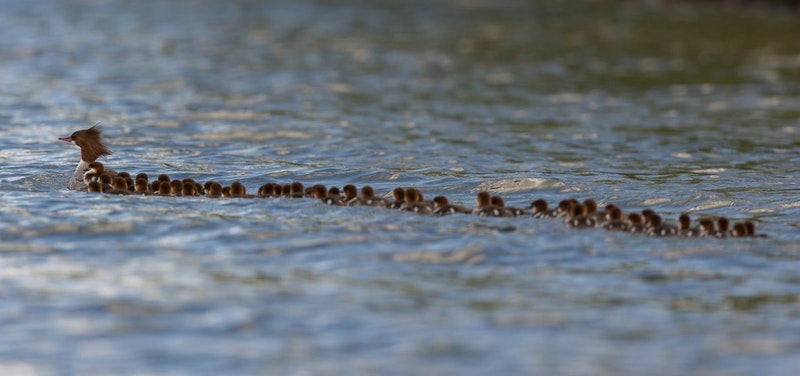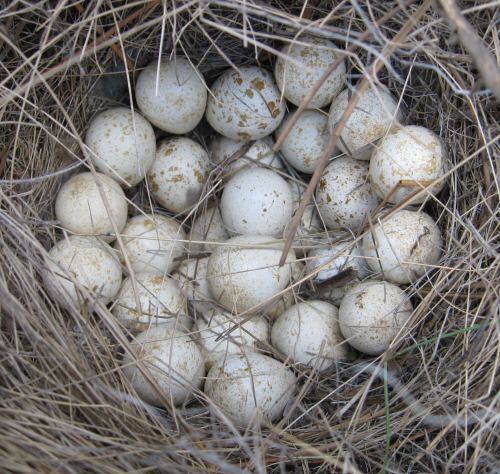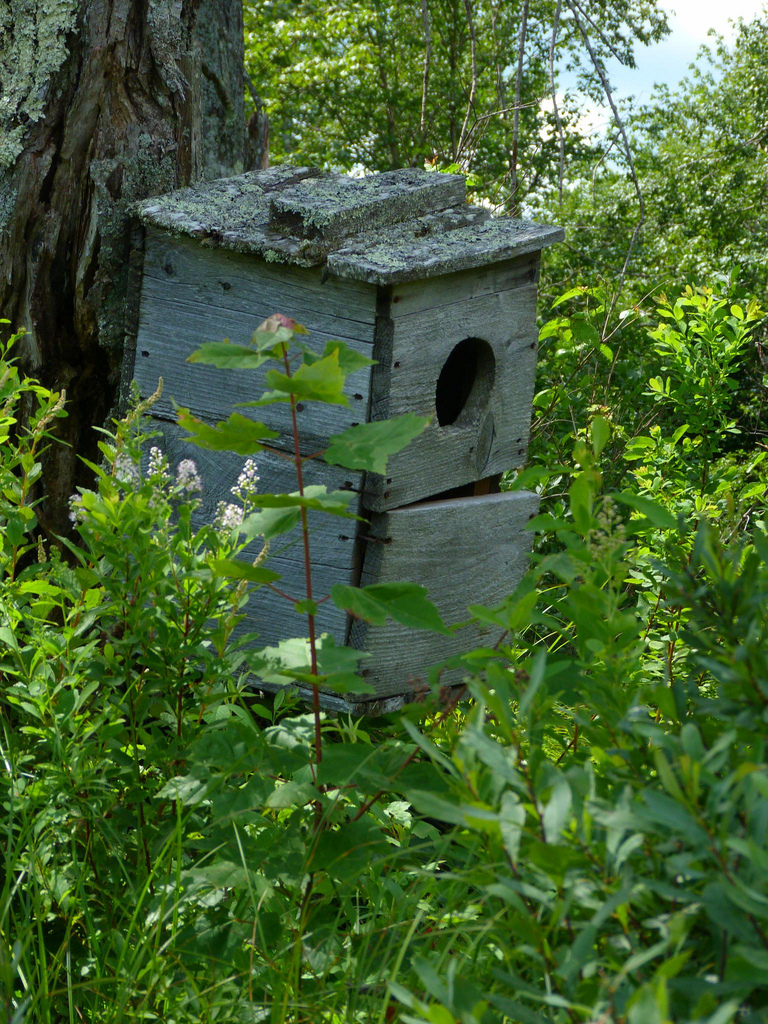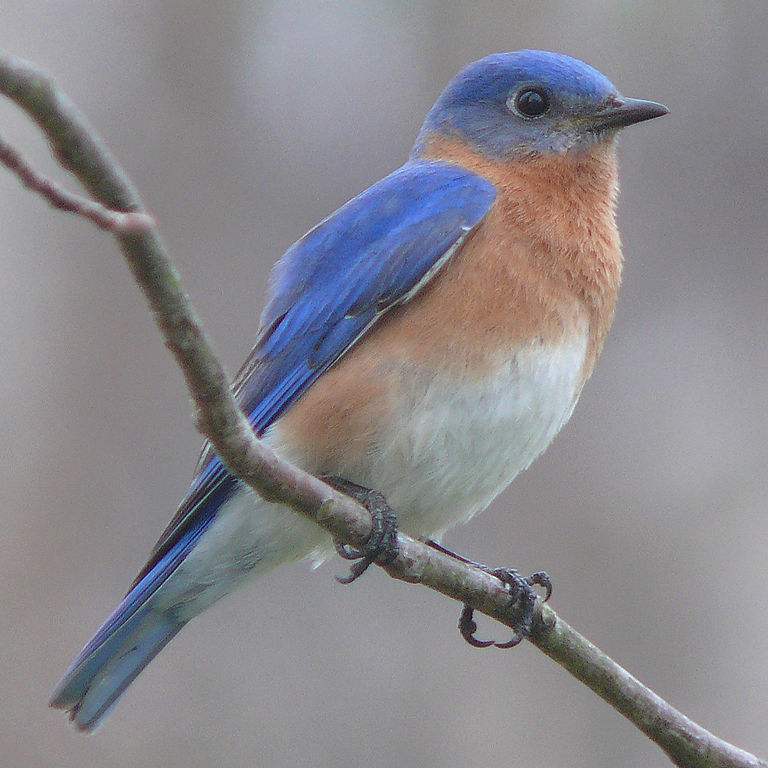
You may have seen the photo of a Common Merganser mom leading a brood of 76, yes, 76 ducklings. They are not all hers, of course, because there is no way she could sit on and incubate that many eggs. A pair of mergansers will usually only lay a dozen eggs. These unrelated young ducks following mom are part of what is called a “crèche”. A number of females, unable or unwilling or unexperienced, apparently abandoned their brood and the duckings took up with the one functional mother in the area. It’s not a common phenomenon, but it happens, most
 often with birds that are colonial and whose eggs hatch at about the same time.
often with birds that are colonial and whose eggs hatch at about the same time.
And then there is egg dumping . Occasionally you can find a duck nest with 30 to 40 or so eggs in it. This occurs whenone or more female birds lay their eggs in another bird’s nest. Egg dumping is
fairly common among Wood Ducks – this is termed intraspecific brood parasitism and has been observed in over 200 species. The largest numbers are in two groups -74 species of waterfowl, and 66 species of songbirds. Most are precocial and colonial.
Why would a female Wood Duck or other bird species lay her eggs in another female’s nest? Well, the dumping female may not have been able to find an appropriate
 nest site, may have lost her nest due to predation or storms, or is a young unmated bird. But even mated females with their own nests sometimes dump additional eggs into other nests. Doesn’t the dumping female then lose those eggs and thus genes? Well, maybe not. Rather than just abandoning nesting, putting her eggs in another nest gives them some, if only slim, chance of survival. Better than nothing.
nest site, may have lost her nest due to predation or storms, or is a young unmated bird. But even mated females with their own nests sometimes dump additional eggs into other nests. Doesn’t the dumping female then lose those eggs and thus genes? Well, maybe not. Rather than just abandoning nesting, putting her eggs in another nest gives them some, if only slim, chance of survival. Better than nothing.
So what happens to the original eggs in the parasitized nest? Breeding success in such nests in reduced by predation, inefficient incubation, and reduced clutch size by the parasitized bird. Sometimes the female will decide that this plethora of eggs is just too much and abandon the nest.
Many people and organizations have placed Wood Duck nesting boxes in appropriate habitats to attract nesting pairs as nesting cavities can be scarce. These boxes are easier to see than natural cavities; that helps researchers and birdwatchers, but may be disadvantageous to the nesting birds. Research has shown that wooden boxes attract more dump nests than natural cavities and the closer they are together, the higher the rate of nest parasitism. Nests placed in less visible (wooded) sites averaged 10 eggs while highly visible nests had 14 eggs. Researchers recommend that artificial nest boxes be placed in visually obscure habitat and that they be placed singly at about the density of natural cavities.

There are lots of variations on this theme, and as you would surmise, there’s lots more to this story. For example, intraspecific brood parasitism is common among bluebirds, but the parasitized mother bluebird, apparently by recognizing the UV reflectance of her own eggs, moves the foreign eggs to the periphery of the nest where they will be incubated less efficiently. Isn’t evolution wonderful?
Roger,
Indeed a fascinating phenomenon of which I was unaware. So thanks kindly for bringing it to my attention.
All the best,
Peter
Pingback: Why Do Pigeons Break Their Eggs? Some Shocking Reasons
Break them as protection? That’s nonsense.